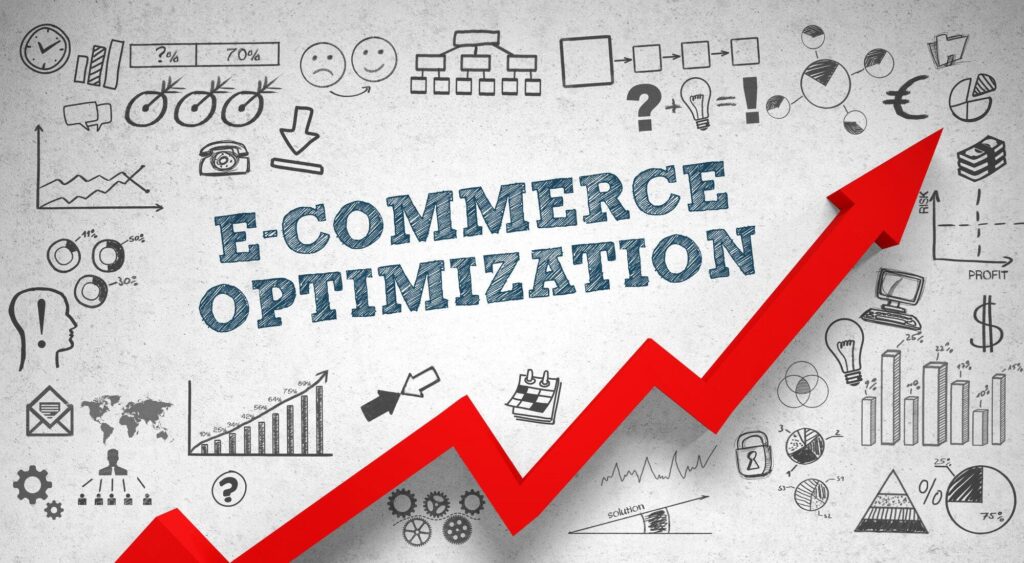In the world of ecommerce, a shocking 90% of businesses fail within the first 120 days. Why? A key reason lies in understanding and implementing the right KPIs for your business to help drive and measure success.
Let’s say you find yourself lost on a ship in the middle of the ocean. To find your way, you’d need tools like a compass and a map. In the world of ecommerce (and in other types of business), we use something called KPIs, or Key Performance Indicators, to guide us.
They tell online store owners how well they’re doing and where they need to do better. It’s like having a secret compass that points out what’s working and what’s not in your store.
But how can you be sure you’re on the right path if you don’t know which way you’re heading? That’s where KPIs really come in.
For those who run online ecommerce stores, knowing and using the right KPIs is like having the best map and compass combined. And guess what? Choosing the right KPIs is what this article will help you with, so let’s take a closer look at KPIs for ecommerce.
Understanding Ecommerce KPIs
When we talk about success in online retail, the term key performance indicators, or KPIs, frequently arises. But what exactly are they? KPIs are specific metrics that businesses use to gauge their progress towards set goals.
They’re not just random numbers; they’re measures with a direct impact on success. In the context of online retailers, KPIs for ecommerce help measure performance and pinpoint areas needing improvement.
KPIs provide more than a mere statistical insight. They deliver actionable feedback. When selected with care and monitored consistently, they can shape strategy and foster tangible growth. Yet, it’s vital to differentiate between ordinary business metrics and the pivotal KPIs.
Key KPIs for Ecommerce Businesses
E-commerce operations have an array of KPIs at their disposal. The real task is picking ones that align with their objectives. Let’s delve into some prominent ones.
Conversion Rate
In Sales KPIs, we have the Conversion Rate, which is the percentage of site visitors completing a purchase. A superior rate hints at a successful alignment of what you offer with what customers seek.
Average Order Value and Total Revenue
Then there’s the Average Order Value, or AOV, representing the mean amount customers part with per order. An increase in AOV can uplift profits without the need for additional traffic. Lastly, Total Revenue stands out as a reflection of e-commerce business performance, depicting income from sales before deductions.
Customer Acquisition Cost
Switching our focus to Customer KPIs, the Customer Acquisition Cost, or CAC, is noteworthy. It pinpoints the expense involved in securing a new customer. A reduction in this cost can amplify profits.
Lifetime Value
The Lifetime Value, or LTV, projects the revenue one can expect from a customer over their association with your business. A soaring LTV is indicative of satisfied, recurring customers. Further, the Retention Rate provides a glimpse into the percentage of customers making repeated purchases, emphasizing the cost-effectiveness of customer retention over acquisition.
Order Fulfillment Speed
On the Operational front, consider the Order Fulfillment Speed, gauging the promptness of order processing and dispatch. Speedy fulfillment often translates to customer satisfaction.
Return Rate and Inventory Turnover
Meanwhile, the Return Rate provides insights into the percentage of returns against sales, potentially highlighting product or description discrepancies. Additionally, the Inventory Turnover rate, showing how frequently inventory is sold and replenished, can guide better cash flow management.
Cost Per Click and Email Open Rates
Lastly, in the Marketing KPIs department, Cost Per Click, or CPC, is crucial. It quantifies the expense for each click in pay-per-click advertising ventures.
The aforementioned Customer Acquisition Cost also merits a mention here due to its implications for marketing budgets. Lastly, Email Open Rates help businesses understand the reach and reception of their email marketing, shedding light on campaign efficacy.
With a grasp of these KPIs, businesses can navigate their ecommerce journey. This will help ensure each step is strategic and success-oriented. Also by meeting your KPIs and delivering a fast service, you can keep your customers happy.
Choosing the Right KPIs for Your Business
As mentioned earlier, just as sailors rely on stars for guidance, businesses lean on KPIs. However, not every KPI will steer every business in the right direction.
It’s about pinpointing the metrics that align with your unique goals. So, how do you sift through the vast array of options?
First off, think about what drives your business. If boosting sales is a top priority, then you’ll want to closely watch your Conversion Rate and Average Order Value. If building a loyal customer base is your goal, the Retention Rate and Lifetime Value should be on your radar.
Next, always ask: does this KPI offer actionable insights? A good metric isn’t just about numbers; it’s about understanding what those numbers mean for your business. For instance, a high Return Rate might mean you need better product descriptions or quality checks.
Lastly, stay adaptable. The e-commerce landscape can shift quickly, and so can your goals.
Regularly review and adjust your KPIs to ensure they stay relevant. Remember, tracking performance is an ongoing journey, not a destination.
The Danger of Ignoring KPIs
Neglecting KPIs is like driving with a blindfold. You’re moving, sure, but there’s no telling where you’ll end up. By not measuring performance, you’re missing out on crucial insights that could drive your success.
For one, you might be pouring money into marketing tactics that just aren’t working. Without metrics like Cost Per Click or Email Open Rates, you’re in the dark about what’s resonating with potential customers.
Ignoring operational KPIs is risky, too. Maybe you’re holding onto inventory for too long, tying up cash. Or perhaps you’re not processing orders fast enough, leaving customers frustrated.
In the end, understanding how your business is really doing is the key to making smart decisions. KPIs for ecommerce sites are more than just numbers; they’re your roadmap to success. Neglect them, and you risk getting lost along the way.
Maximizing Performance with KPIs
Harnessing the power of KPIs for ecommerce isn’t just about numbers; it’s about leveraging insights for transformative action. By focusing on the right indicators, e-commerce sites can identify gaps, optimize operations, and ensure sustained growth.
As the digital marketplace becomes increasingly competitive, the importance of fine-tuning your strategy cannot be overstated. At ACI Logistix, we recognize the pivotal role of logistics in this equation. Reach out to us today and let’s find out how we can help you take your business to the next level.

Join our Newsletter
Get all the latest news directly to your inbox!

Join our Newsletter
Get all the latest news directly to your inbox!
Related Posts
- March 1, 2024




